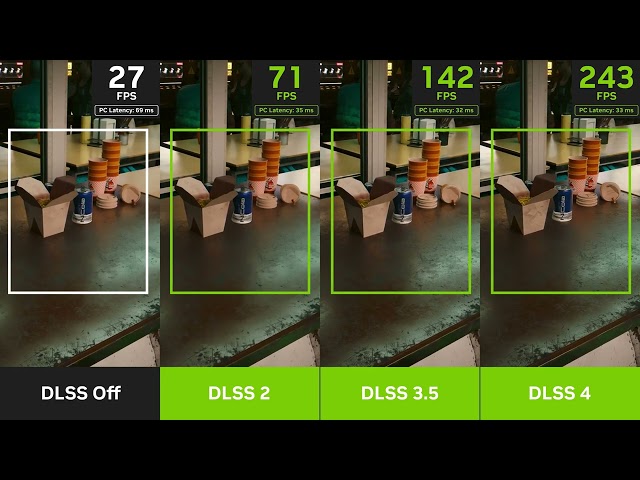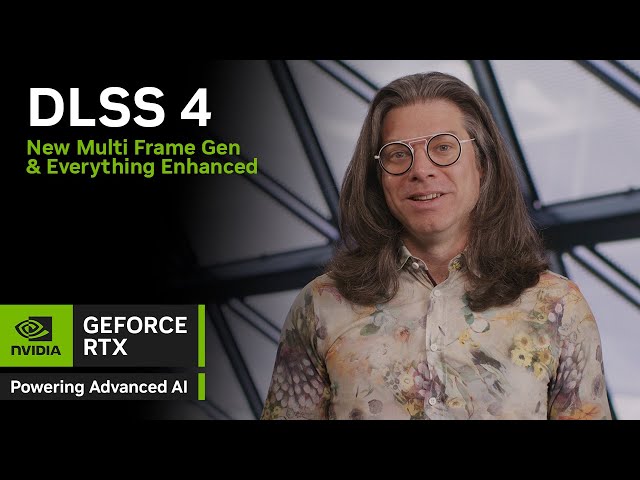Nvidia has unveiled the latest iteration of its DLSS suite, with the newest addition now claiming to increase your game’s frame rate by as much as 8x without losing graphical fidelity, thanks to upscaling and frame generation. DLSS 4 improves upon DLSS 3 in several ways but the biggest new feature is a new frame generation mode called DLSS 4 Multi Frame Generation, which allows for not just one but as many as three frames to be created entirely by AI.
The innovation was unveiled as part of Nvidia‘s CES keynote where it also revealed the RTX 5000 series of GPUs – including claiming the RTX 5070 is as fast as the RTX 4090 – and discussed a new type of graphics processing technique called neural rendering.

Back to DLSS 4 and along with its new Multi Frame Generation mode, it also includes improved performance and reduced memory usage for existing single-frame DLSS 3 Frame Generation. DLSS 3.5 Ray Reconstruction has also been tweaked to offer increased stability and lighting detail in ray tracing while even DLSS 2 Super Resolution has been improved with better stability and higher detail in motion.
The latter improvements have all been made thanks to Nvidia constantly retraining and iterating on the AI models that inform the algorithms used for these techniques. Meanwhile, DLSS Multi Frame Generation is an entirely new capability unlocked by the company’s latest RTX 50 Blackwell GPU architecture.
Yes, DLSS 4 Multi Frame Generation is exclusive to RTX 5000 GPUs but Nvidia does at least give a stronger reason for this than it previous gave for why the original version of Frame Generation was only available on RTX 4000 series GPUs. In this instance, it explains that generating as many as three new frames entirely from AI requires consist frame pacing, i.e. the regularity with which the GPU renders each frame. In order to ensure that, the Blackwell architecture renders using Flip Metering, “which shifts the frame pacing logic to the display engine, enabling the GPU to more precisely manage display timing.”

Beyond this, DLSS Multi Frame Generation seems to work largely in the same way as DLSS 3 Frame Generation, with the technique taking movement vector data from the game engine, combining it with its AI Optical Flow neural network and simply extrapolating new frames to fill the gap between traditionally rendered frames. By combining DLSS Multi Frame Generation’s ability to render three new frames with the upscaling ability of DLSS Super Resolution, we can arrive at DLSS 4’s ability to produce frame rates that are eight times higher than would be achieved using conventional rendering.
As impressive as this sounds, what is seemingly inherent to this technique is that it relies on you having a rather low initial frame rate, with long amounts of time between each frame, and onscreen movement that isn’t too extreme. It’s telling that all the company’s demoes show slow walking movement through a scene, and not the fast, frenetic action of many games.
Still, with over 75 games set to include DLSS 4 Multi Frame Generation once new RTX 5000 cards become available, there should be plenty of opportunity to see just how well it performs.
In the mean time, you can read all about the cards it’ll run on in our guides to the RTX 5090, RTX 5080, and RTX 5070, which detail the specs, release date, and price of each upcoming Blackwell GPU.










Leave a Reply